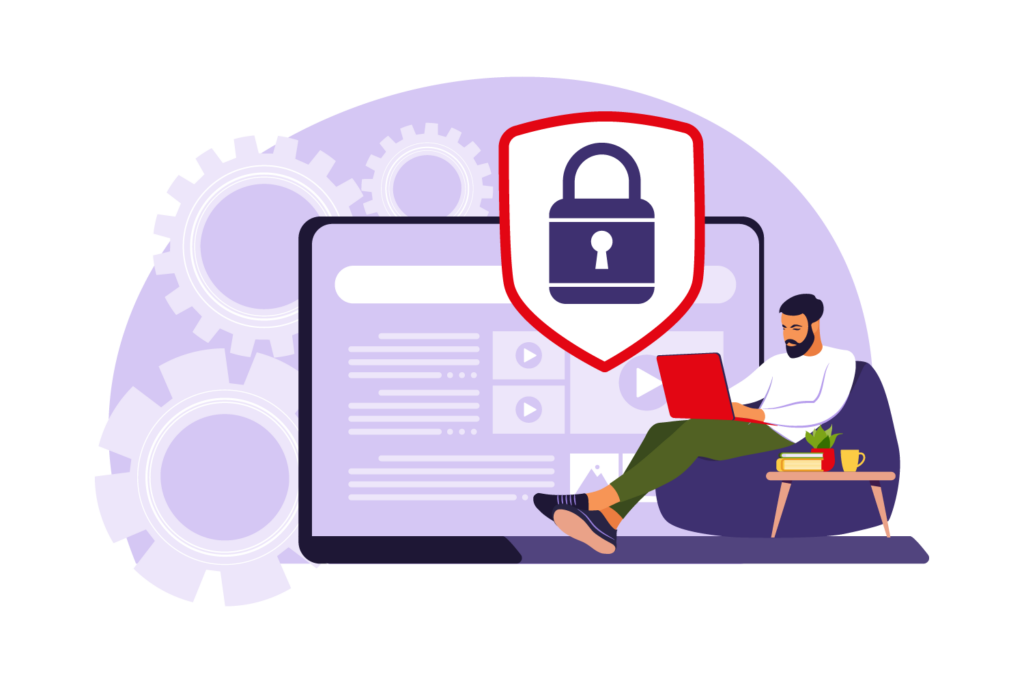
Cybersecurity spending across the globe will reach $219 billion this year and is forecast to grow to $300 billion by 2026. Plus, 66% of CIOs plan to increase investment in 2023 and in years to come. This consistent rise in spending is continuing to create great opportunities for organizations with innovative cybersecurity solutions. However, as more technologies emerge, it is important to make sure that your solution stands out. Content marketing provides the ideal opportunity to do so. For example, businesses that have an updated blog see a 165% growth in leads compared to companies that don’t which only see a 73% growth. While this is only one example of the direct impact of content marketing, it proves to be an invaluable marketing tactic. Consider these content marketing tactics to help your cybersecurity solution stand out amongst competitors.
Keep it Simple, But Speak Your Customer’s Language
Cybersecurity can be complex. In some instances, these complexities can be a distraction, while at other times, it is beneficial. The most important thing to keep in mind is to speak your customer’s language and know who your audience is. Different personas can be more receptive to different content. For example, say you are looking to target CIOs. These executive-level individuals take an interest in things like return on investment (ROI), key benefits of using a solution and how it will improve productivity or mitigate risk. Highlighting these in content assets gives you the foundation for connection with your audience. In another example, if your target audience is a Team Lead, your content tactics might be different. These are mid-level team members and might not have the same focus as executives. While they still care about mitigating risk and improving productivity, they are more likely interested in the technical elements of the tool or solution. They want to know how it works, how it integrates with their current systems and what benefits it will provide them as a more hands-on employee. Create content that includes some of the technical components and benefits to someone in their position. Your content needs to cater to different audiences and be focused on what they are looking for in a solution.

Transform your tech marketing to amplify your ROI. Download our free eBook to learn more!
Explore Current Trends and New Challenges
Creating content focused on current trends helps show your audience you are a thought leader and an expert on what’s going on in the industry. In cybersecurity, new concerns or trends often pop up, opening doors for new and timely content. As trends change, adapt old content, or create new for the most impact. Showing potential customers you are in the know can build their confidence and trust in your company.
Highlight Success Stories and Utilize Various Content Types
Success stories, case studies, use cases or whatever you like to call them are powerful content assets. These make a big impact in the later stages of the buyer’s journey by putting the prospect in the lens of a customer. 52% of B2B buyers rank case studies as “very important” when evaluating vendors, further proving how critical it is to have these assets in your portfolio. Case studies often transition a prospect into a customer.
Creating the right content at the right time is foundational to making cybersecurity content marketing successful. While extremely effective, a case study should not be the first thing you show to a new prospect unless they are ready for that conversation. Generate leads with gated assets such as eBooks and white papers and nurture current leads with ungated assets or exclusive content such as blogs, infographics and guides.
Include Content on Ethics and Regulations
When thinking of cybersecurity, there are often many concerns about regulations, privacy and ethics. Companies that consider purchasing your solution want to know that any data is secure and protected and there are no code violations or other infractions. It is up to your company to address these in your messaging and various elements of your content marketing.
- Explain regulations and general best practices. Your audience wants to know that regulations and industry best practices are being followed. These elements should be incorporated into your company’s messaging but also content assets. For example, write a blog about different regulation components. This educates the audience and gives them comfort in knowing your company is up to date on all of the legal details.
- Be cognizant of privacy and data. Many companies are concerned with data protection and privacy. Generate content that highlights how your solution follows privacy laws and protects important data. This puts prospects and customers at ease when it comes to data security and privacy. For example, an infographic about data privacy can educate and show how your product protects it.
- Discuss vulnerabilities and potential issues. Vulnerabilities are out there and cyberattacks happen. Being up to speed on what happens when something goes south can make a world of difference. Prospects know these things happen too and they want to feel comfortable knowing that your solution will protect them. Create content that highlights common breach types or cyber threats. Then discuss how your solution addresses them. For example, develop an eBook on current cybersecurity threats, common ways to prevent them and how your product comes into play.
Cybersecurity does not have to be a complicated industry. Content marketing helps simplify topic areas while hitting on key customer pain points. Using these content strategies for your cybersecurity company will help boost awareness, generate more leads and convert more customers.
Ready to give your cybersecurity marketing a boost? Contact us today or request a free marketing consultation.
There are no comments